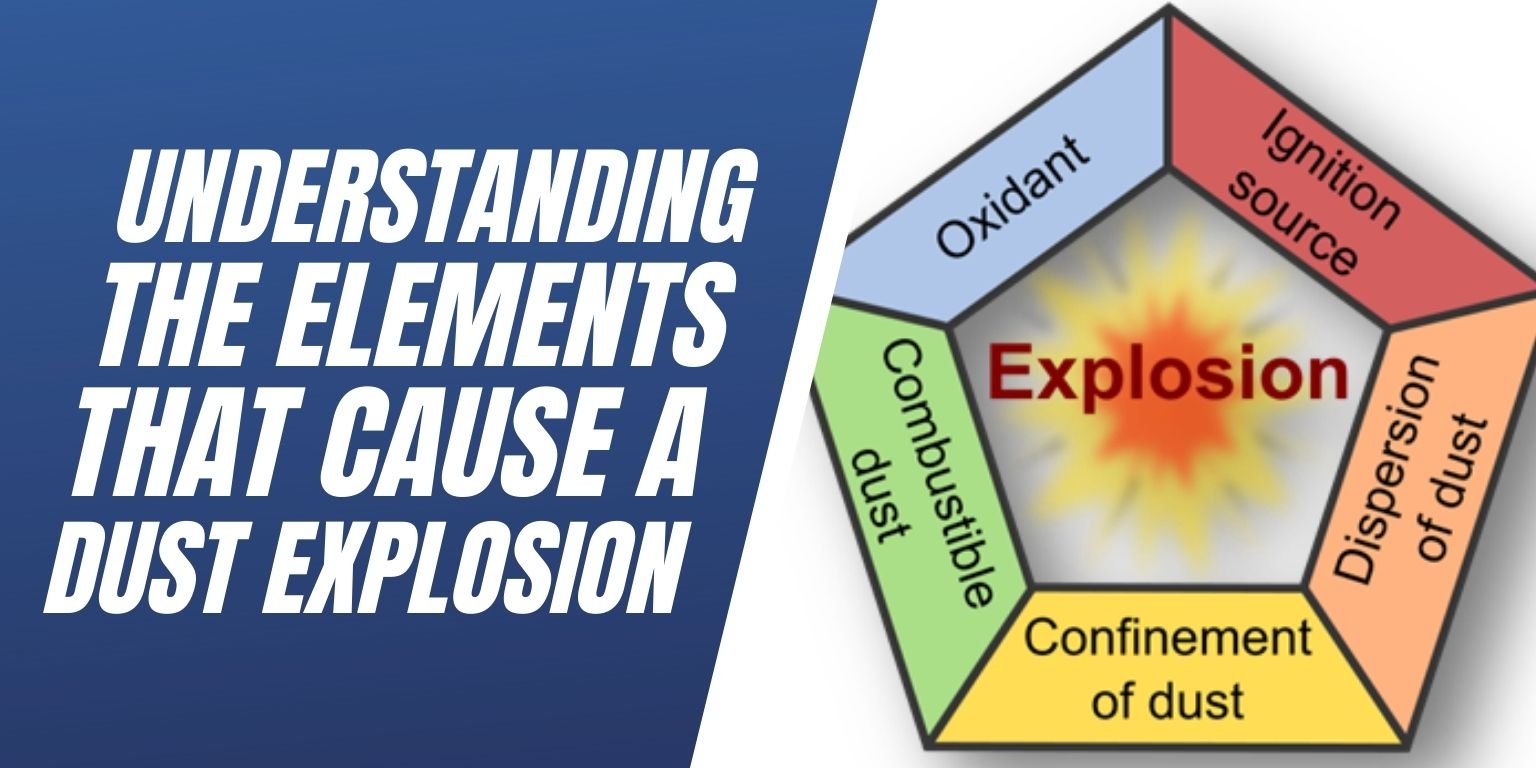
For a fire to be able to burn it needs to have three things present simultaneously: Fuel, Ignition, and Oxygen. In fire safety this idea is known as the ‘Fire Triangle’, and is commonly used to help avoid industrial fires. Take away any one of these elements and you cannot have a fire. But which element can easily be removed?
1. Oxidant
A fire needs Oxygen to be able to burn, and this explosion element is present practically everywhere. It is in the air workers are breathing in the facility and outside, in the pressured air being used for cleaning, and in closed rooms unless they have been sealed and emptied of oxygen.
Since oxygen is a component of air and is necessary for workers to breathe it is also the hardest element to remove from the explosion pentagon.
2. Ignition
This is what actually causes the other elements to combust and create a dust explosion. The ignition source can range from something as small as a static electricity spark or lit cigarette, or a spark from metal parts scraping against each other.
This element can be contained to some extent by removing any open flames or potential for sparks to be created. It is also important to make sure machinery is clean and not getting too hot when it is operating. However, it is next to impossible to completely remove the risk for an ignition since it can be caused by such varied sources. No facility can completely ensure that there will be no static or other accidental sparks.
3. Fuel (Dust)
This is what actually ignites and provides a source for the fire or combustion to continue burning. In a dust explosion it is the airborne dust that is providing the fuel and causing it to change from a fire to an explosion.
Proper combustible dust cleaning is one of the most effective ways to prevent a catastrophic dust explosion. By taking away the fuel from the dust explosion pentagon it removes the risk of an explosion, and also removes the possibility for a fire. The NFPA combustible dust standards clearly outline the best methods for cleaning this dust, which should only be done by a trained professional.
However, for a combustible dust explosion, two additional elements are needed to form what is known as the 'Dust Explosion Pentagon': Confinement and Dispersion. These elements are created when the fuel, in this case combustible dust, is spread out as a dust cloud within a closed area, such as a factory or warehouse. Much like with the fire triangle, taking away even one of these elements can remove the risk of a dust explosion.
4. Dispersion
This is when the accumulated dust is spread out over the air and creates a dust cloud. This can be caused when daily activities disturb accumulated dust and send it airborne, such as sweeping, exhaust from machinery, or cleaning using compressed air. Another cause of dust dispersion is when a small primary combustion occurs and sends shockwaves throughout the facility. These shockwaves can knock down dust that had settled on rafters, pipes or HVAC ductwork and spread it throughout the air. Once it has been dispersed this dust can change from the initial fire to an explosion almost immediately.
Preventing this element from becoming part of the explosion pentagon is to simply clean any accumulated dust to prevent it from having the possibility of becoming dispersed. A dust collection system can be used to prevent large buildups from constantly occurring, but these need to be properly cleaned and maintained. Dust within these systems ignites easily, and creates a fire that is difficult to control and put out.
5. Confinement
When the dust cloud is contained within a closed area, which can be as large as a warehouse or factory, it causes issues with confinement. Dust particles can remain suspended in confined air for days, causing the density of the dust cloud to be constantly increasing. When the dust cloud combusts, the confinement will cause intense pressure to build and push the explosion through every corner of the facility. Confined dust explosions have had the power to lift roofs from buildings or buckle solid concrete floors.
Contact Us Here or call 888-845-3952 if you need to have your facility cleaned to remove the fuel from the dust explosion pentagon. Our technicians are OSHA trained and use explosion proof vacuum cleaners when handling combustible dusts.

